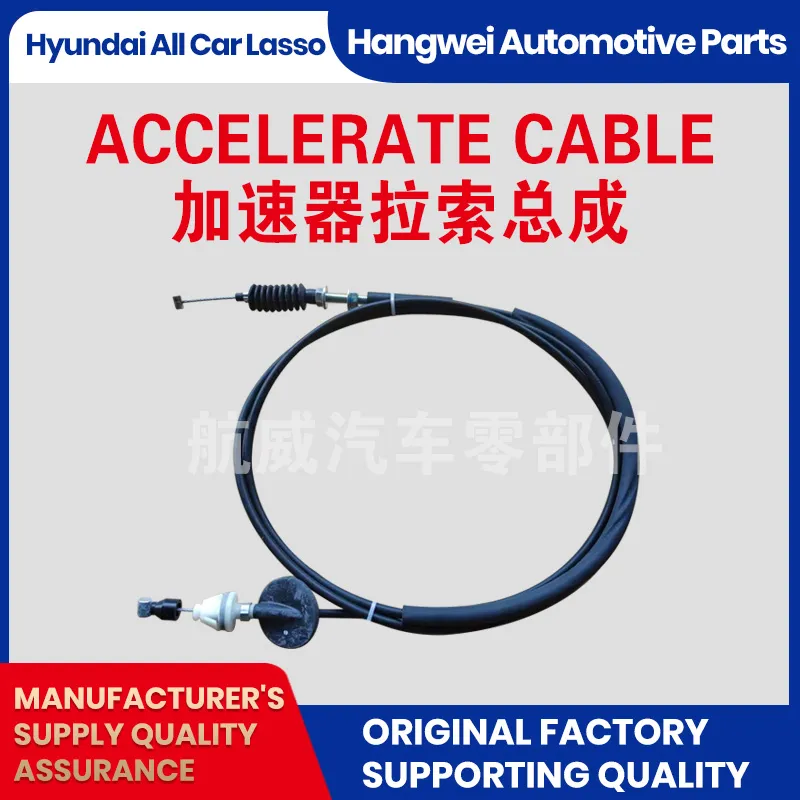Control Mechanism for Throttle Cable Adjustment and Performance Optimization
Understanding Throttle Cable Control in Vehicles
Throttle cable control is a fundamental component in the operation of internal combustion engines, particularly in vehicles that employ a mechanical throttle. This system is crucial for regulating the engine's power output and, consequently, the speed of the vehicle. With advancements in technology, many modern cars utilize electronic throttle control systems. However, understanding the traditional throttle cable control is essential for appreciating the evolution of automotive technology.
At its core, the throttle cable control is a simple yet effective mechanism. It consists of a flexible cable that connects the accelerator pedal to the throttle body. When the driver presses the accelerator pedal, the cable pulls on the throttle plate, allowing more air to enter the engine. This increase in airflow boosts the engine's power output, leading to acceleration. Conversely, when the driver releases the pedal, the cable retracts, closing the throttle plate and reducing engine power.
One of the key advantages of throttle cable control is its mechanical simplicity. The system requires minimal electronic components, making it relatively easy to troubleshoot and repair. Mechanics can quickly identify problems such as frayed cables or misalignment, which can affect the throttle's responsiveness. Additionally, the direct connection between the pedal and throttle offers a tactile feel that many drivers appreciate, providing immediate feedback that enhances the driving experience.
However, throttle cable systems do have their drawbacks. Over time, cables can stretch or wear out, which can result in decreased performance. A stretched cable may cause a delay in throttle response, leading to a less engaging driving experience. Moreover, in extreme conditions, such as exposure to heat or harsh environments, cables can corrode or break, potentially leaving the driver with little control over the vehicle's speed. Regular maintenance, including the inspection and lubrication of cables, is vital to ensure optimal performance.
throttle cable control

In contrast, electronic throttle control has gained popularity in recent years. This system replaces the mechanical cable with electronic sensors, which communicate with the engine control unit (ECU). The ECU interprets signals from the accelerator pedal and adjusts the throttle position accordingly. This innovation allows for more precise control over the engine's performance, contributing to better fuel efficiency and reduced emissions. Additionally, electronic systems can be integrated with advanced technologies, such as cruise control and traction control, enhancing overall vehicle safety.
Despite the shift towards electronic systems, throttle cable control still finds relevance in various applications, particularly in performance vehicles and older models. Enthusiasts often prefer the direct and unfiltered connection that a cable system offers. In motorsports, for instance, drivers rely on the immediate response provided by a mechanical throttle to make split-second decisions on the track.
When it comes to troubleshooting one’s throttle cable system, there are a few key signs of wear to watch for. If the accelerator pedal feels unusually stiff or if there is a lag in acceleration, it may indicate that the throttle cable needs to be inspected. Similarly, any strange noises, such as clicking or grinding when pressing the pedal, may warrant further investigation.
In conclusion, while modern vehicles increasingly adopt electronic throttle control systems, the traditional throttle cable control remains a testament to automotive engineering’s ingenuity. Understanding how throttle cable systems work enhances our appreciation of vehicle performance and highlights the importance of regular maintenance. Whether one prefers the direct engagement of a cable system or the efficiency of modern electronics, the evolution of throttle control reflects the broader advancements in the automotive landscape.
-
Upgrade Your Control with Premium Throttle CablesNewsAug.08,2025
-
Stay in Control with Premium Hand Brake CablesNewsAug.08,2025
-
Experience Unmatched Performance with Our Clutch HosesNewsAug.08,2025
-
Ensure Safety and Reliability with Premium Handbrake CablesNewsAug.08,2025
-
Enhance Your Vehicle with High-Performance Clutch LinesNewsAug.08,2025
-
Elevate Your Ride with Premium Gear CablesNewsAug.08,2025
